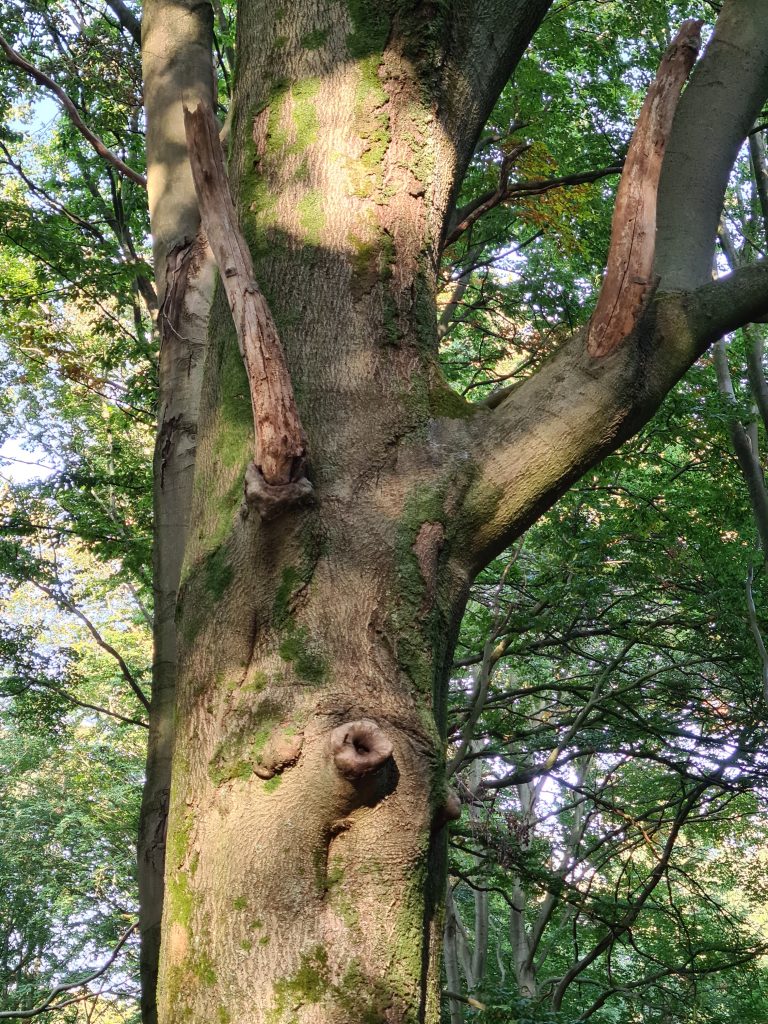
I have been a passionate museum visitor for many years and hardly any exhibition is bizarre enough to put me off. Friends with so-called “niche interests” appreciate it very much if they don’t want to go alone, because I enthusiastically agree to go even when the rest of their social environment shake their heads in disgust. “Video installations from the 70s? – But of course!” “The special exhibition at the Microbe Museum? – Of course I’ll come!” “The development of weaving in the socio-political context of the industrial revolution? – Great! When do we go?“
As I too had to limit my radius of action in the last few months due to Corona, I could not sate this passion as much as I would have liked to. So I simply looked for exhibits somewhere else: in the forest.
Earlier in art lessons we were often asked: “What does the artist want to tell us with this? – and I did not dare to answer “How the heck should I know?” And that is exactly what makes tree art so unexacting: the “sculptures” there don’t want to tell us anything at all, it is simply fun to interpret something into their forms. Try it out for yourself…
What do you see? Do you identify the stag in the cover picture too? If not (and you are wondering instead what kind of pills the author of this text is taking) – never mind! Let’s try again. What do you see here?

An insect‘s head?
Or here?

A bird? (If you’re thinking: Who’s that bird-brained? I wouldn‘t blame you for that either!)
But as a sign that I am not alone in my love of interpretation, I will now show you the “Middle Finger Tree”, which my fellow Harlequin RGE has kindly made available.

“If your life ever brings sorrow or worry, then walk (…)through the forest with your eyes open… “(*) I think this is perhaps the best advice in film history – and I would never have dreamed I would quote from this film…
Greetings to you from
Your Harlequin Woodland Fairy
(*) “Sissi, the Young Empress” (Sissi was quoting her father “Pappile” here, who now and then appeared on the scene to express himself in robust vernacular).
Original text: BBR
English translation: BCO
Bildquellen
- Hirsch: Bildrechte beim Autor
- Ameisenkopf: Bildrechte beim Autor
- Vogel: Bildrechte beim Autor
- Stinkefinger: rge

